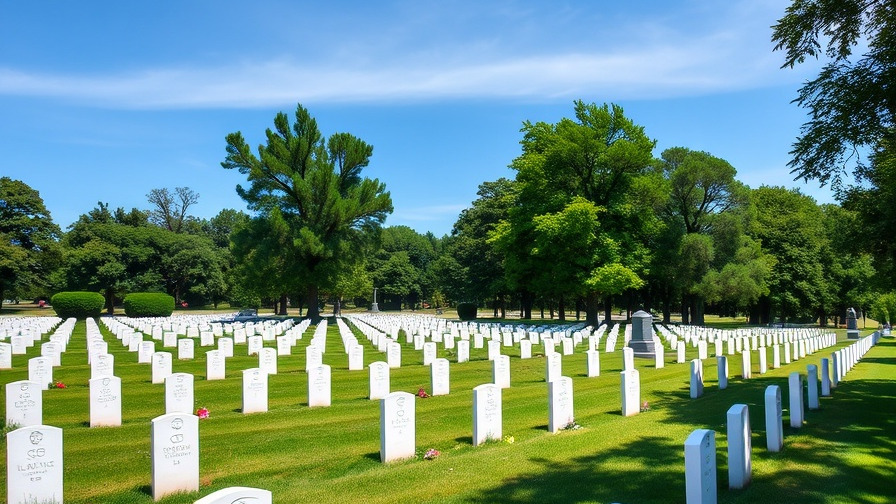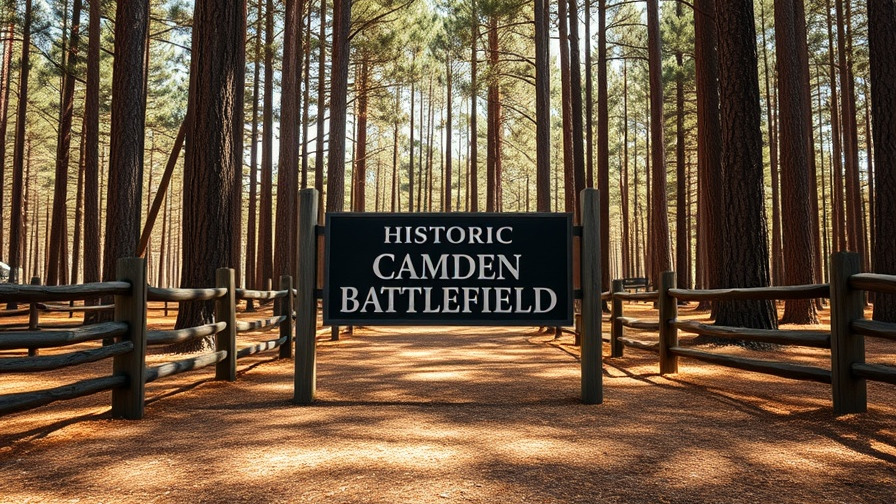
Exploring the Liberty Trail: The Historic Significance of Hobkirk Hill
The American Revolutionary War saw countless battles that shaped the future of the United States, yet many of these sites are often overshadowed by larger, more famous battles like Bunker Hill and Yorktown. One of those lesser-known but significant sites is the Hobkirk Hill battlefield in Camden, South Carolina, where the clash on April 25, 1781, heralded crucial strategies and tactical decisions in the ongoing struggle against British forces. As we investigate the history of Hobkirk Hill, we unveil how Colonel Nathaniel Greene's campaign was marked by strategic retreats and relentless pursuit of victory.
In 'Greene Moves South for The Battle of Hobkirk Hill | The Liberty Trail,' the discussion dives into the significance of this lesser-known battlefield, exploring key insights that sparked deeper analysis on our end.
What Led Up to the Battle of Hobkirk Hill?
To fully understand Hobkirk Hill, we must first rewind to March 15, 1781, and the pivotal Battle of Guilford Courthouse. Major General Nathaniel Greene led the Continental Army against Lieutenant General Charles Cornwallis in a conflict that would ultimately mark a turning point for the American forces. Though Cornwallis claimed a pyrrhic victory, it came at a tremendous cost—a severely depleted army that struggled to maintain its hold in the Carolinas.
Greene decided to pursue Cornwallis but took the bold step of redirecting his efforts towards the British garrison in Camden, making it his primary target. Greene's request for a reconquest of South Carolina wasn’t merely a hallmark of ambition but a tactical gambit aimed at dismantling British supply lines and strongholds in the southern territory.
A Closer Look at Camden and Its Garrison
Camden was heavily fortified with British readouts designed to protect their strategic position following Charleston's fall in 1780. Greene assessed these fortifications and determined a direct assault was far too risky. Instead, he opted for a strategy that leveraged the terrain and the element of surprise, positioning his troops on the elevated grounds of Hobkirk Hill. This set the stage for a tactical dance of wits between Greene and Cornwallis' commanders.
Before the battle, Captain Robert Kirkwood led a reconnaissance mission to gauge British defenses. However, upon finding themselves outmanned and outgunned, Greene made a calculated decision to wait, hoping that British troops would underestimate his forces.
The Battle Unfolds: A Clash of Strategies
As the British forces, led by Lord Francis Rawdon, prepared for their assault, they relied on intelligence suggesting that Greene’s forces were weak and disorganized. Unfortunately for them, intelligence often proves deceptive in war. On the morning of April 25, the stage was set as Rawdon initiated his attack against Greene’s fortified position. What followed was a fierce struggle marked by tactical maneuvers, miscommunications, and ultimately, Greene's strategic retreat.
Greene’s forces began with a promise of victory in their anticipated double envelopment maneuver but quickly found their lines faltering amidst chaos. The wounding of key commanders like Colonel Ford disrupted Greene's coordination and testing the resilience of his Continental troops.
Reflections on Leadership and Legacy
The aftermath of the battle saw Greene and his men retreat strategically, despite the tactical loss. Greene famously remarked, "We fight, get beat, rise, and fight again," encapsulating the spirit of perseverance that characterized his campaign. Although Hobkirk Hill was a setback in the short term, it strategically weakened British forces, leading to their eventual withdrawal from Camden just weeks later.
This illustrates that in the theater of war, persistent engagement, tactical withdrawals, and learning from loss sometimes yield greater long-term dividends than immediate victories. Greene’s legacy becomes one of resilience that invigorated American determination and laid the groundwork for subsequent victories.
Why Hobkirk Hill Should Matter to Us Today
The lessons from Hobkirk Hill resonate well beyond the battlefield. In modern contexts, understanding the art of strategy, leadership, and perseverance can inform personal endeavors, community challenges, and even broader societal movements. As we explore such historical sites, we not only honor those who fought but also find applicable wisdom in their struggles and triumphs.
Visiting Camden and the Liberty Trail serves as a reminder that history is ongoing, inviting us to draw parallels and inspire future generations to embrace the spirit of engagement, even in adversity. The beauty of places like Hobkirk Hill lies within their narratives, offering both an escape into the past and insight into future resilience.
 Add Row
Add Row  Add
Add 




Write A Comment